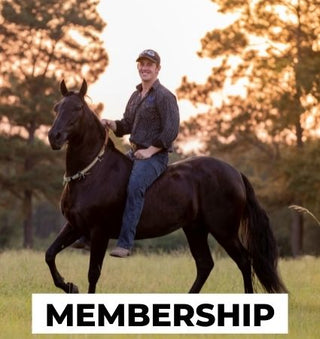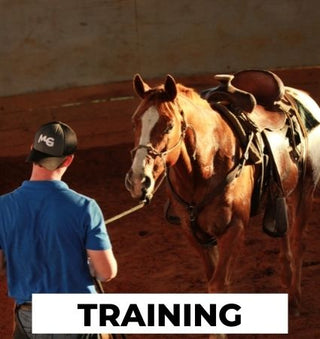In this blog, I'll share my experiences and insights on training sensitive horses, focusing on how we can turn their natural responsiveness and energy into advantages rather than seeing them as challenges.
The Initial Struggles
When I first decided to become a horsemanship clinician, I faced numerous challenges with sensitive horses. I wanted to help folks with their horses, so I did what anyone would do—I studied all the available knowledge. I read every book I could find, watched countless videos, and then went home to practice on the horses I had. These horses were passive freecoats, and my initial attempts to train them were met with resistance. I quickly learned that traditional methods, like running them in circles until they tired out, simply didn’t work. These horses would run circles around me, literally laughing at my efforts.
Adapting Training Methods
I soon realized that I needed to adapt my approach. Instead of trying to wear them down, I decided to use their sensitivity to our advantage. This shift in perspective was a game-changer. Rather than exhausting the horses to get them to comply, I started encouraging them to perform the desired actions by leveraging their natural responsiveness. This method not only made training more effective but also more enjoyable for both the horses and me.
Utilizing Sensitivity
Sensitive horses can be challenging, but their alertness and energy can be channeled positively. Think of it like working with high-energy dog breeds, such as Border Collies. You wouldn't want a lazy dog for obedience training; you want one with energy and drive. The same goes for horses. Sensitive horses can be as precise as driving a Porsche compared to a Mack truck. With a Porsche, you only need minimal effort to steer, which makes the process much smoother and more efficient.
Establishing Leadership
Establishing leadership is crucial in horse training. When I meet a new horse, like Norman, I don’t follow the traditional greeting rituals. Instead, I focus on demonstrating my leadership right away. I guide the horse firmly but gently, showing that I’m in charge without being aggressive. This approach helps build trust and respect, laying a solid foundation for further training.
The Importance of Consistency
Consistency in commands is key to successful training. I always make sure my signals are clear and consistent. For instance, when I pick up the right rein, it goes to my right pocket; the left rein goes to my left pocket. These consistent signals help the horse understand and anticipate my actions, making the training process smoother and more effective.
Conclusion
Training sensitive horses requires a unique approach. By leveraging their natural sensitivity and energy, establishing clear leadership, and maintaining consistent commands, we can achieve remarkable results. As I often say, "Horse sense is not common sense. If it were, I wouldn’t have a job." By embracing the unique characteristics of each horse, we can turn potential challenges into successful and fulfilling training experiences.
Check out more free training resources HERE!









